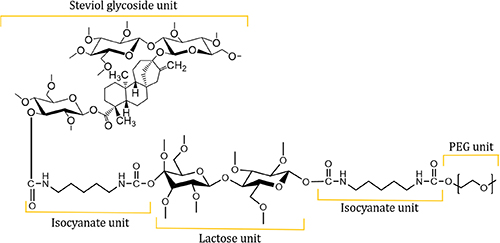Copyright © 2022 Foshan MBRT Nanofiberlabs Technology Co., Ltd All rights reserved.Site Map
In this study, the synthesis and application of biocompatible steviol glycosides based polyurethane/poly (ε‐caprolactone) (PU/PCL) fibers was performed by electrospinning as a potential wound dressing materials that can be used for the closure of nonhealing wounds. During electrospinning, steviol glycoside‐based polyurethane structures were used in blend formation with poly (ε‐caprolactone) for easy producibility. Steviol glycosides are a natural abundant and easily accessible source as the main component of the wound dressing material due to their free hydroxyl groups, high biocompatibility, and hydrophilicity. The structure of steviol glycosides is composed of saccharide units and the free OH groups. Thus, steviol glycosides act as a crosslinker within the polyurethane structure and provides mechanical strength. For the production of steviol glycosides based PU/PCL fibers first, the steviol glycosides as a monomer were isolated from the stevia rebudiana. Then, polyurethane structures containing stevia glycoside were synthesized with hexamethylene diisocyanate, lactose and PEG‐200 by solution polymerization technique. PCL was added to the prepared polyurethanes in a ratio of 1:2 and formation of nanofiber structure. The prepared wound dressing material was characterized by Fourier transform infrared, atomic force microscopy, and scanning electron microscope techniques. Swelling degree, water content and oxygen permeability assay of the steviol glycosides based PU/PCL wound dressing material was determined. In biocompatibility test, cell viability value of PU/PCL fibrous materials in indirect cytotoxicity test was determined as 86.9% and cell adhesion on hybrid PU/PCL fibers was showed as morphological. In accordance with this target, the steviol glycosides based PU/PCL wound dressing material can be produced easily and low cost. As a result, the wound dressing materials obtained with their high biocompatibility and low costs will be an effective and fast method for the healing of open wounds of diabetics.

Published:2021
Journal:Journal of Applied Polymer Science
Impact Factor:2.537
Paper link:https://onlinelibrary.wiley.com/doi/abs/10.1002/app.49217